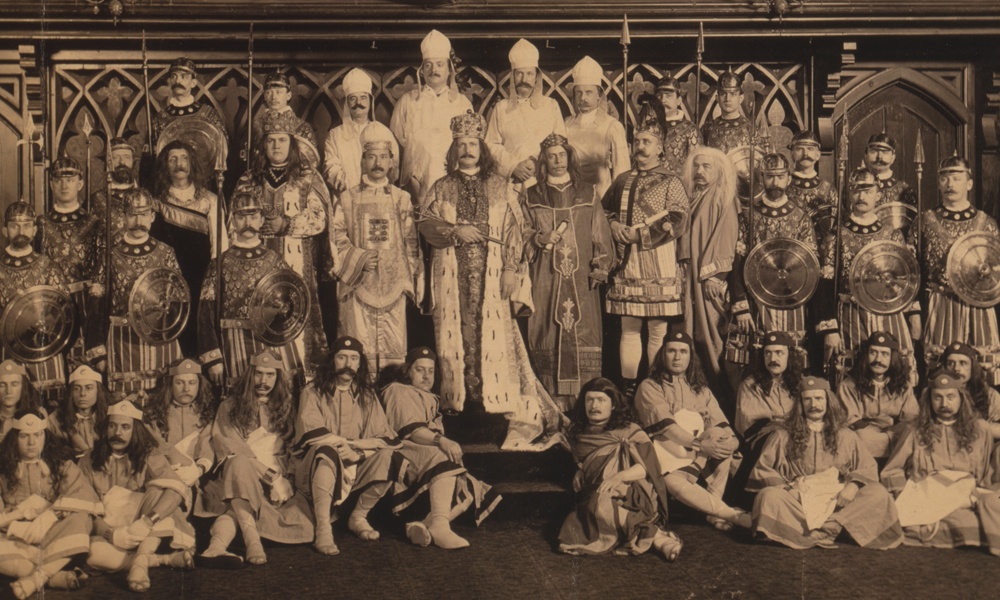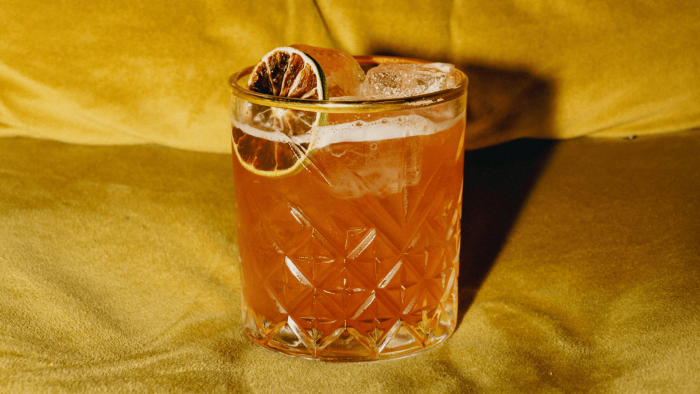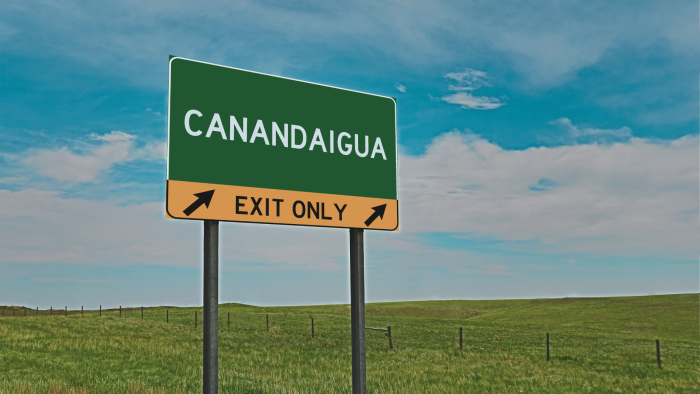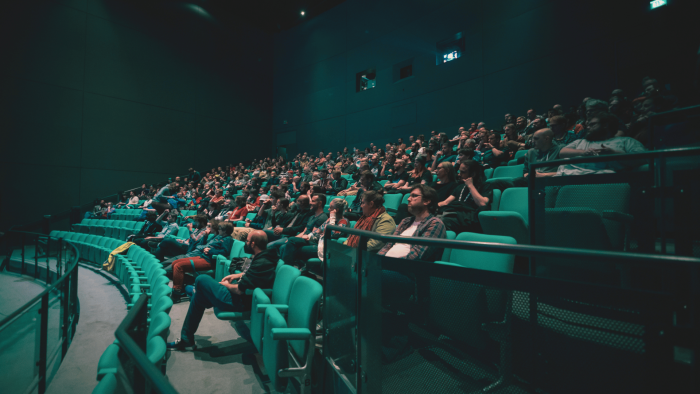If you say you’re not interested in conspiracies and secret societies, you’re a dirty goddamn liar, because they’re a guilty pleasure for everyone. You’ve absolutely talked about JFK’s second shooter, Jay Z’s Illuminati ties, and government mind control, so don’t pretend like you don’t love this shit. We’ve been conspiring since the guys two caves down found better berries than us and there’s no reason to think we’re going to stop contriving, conniving, or conspiring in the near future. And, as in all human endeavors, different conspiracies got different results.
We should also mention that researching this article was probably the most fun we’ve had researching anything that didn’t involve drinking. It also means to take our links and sources with a grain of salt. We’ve done our best to stay reliable here, but with these people, that’s hard to do. If you haven’t already, definitely jump down the rabbit hole that is HTML conspiracy websites from the early 2000’s. You won’t learn anything useful, but you’ll be entertained for awhile.
Here are 6 secret societies who had surprising real world effects.
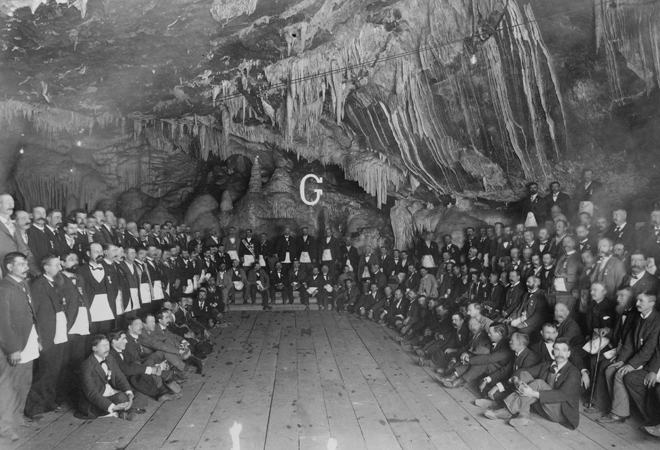
The Freemasons
Freemasons are also the worst kept secret of American government since JFK’s birthday party. They’re the most well-known secret society present in America and if you wanted an example of a small group of people influencing the fate of a nation, you’re not going to find one that’s much better than the Freemasons in the British colonies of North America. There weren’t as many as you might expect, given the attention these guys get in pop culture, and by no means are they responsible for starting the fighting, but there a quite a few Founding Fathers with masonic memberships or connections.
So they weren’t the power hungry independence seeking zealots that people (Nicolas Cage) think they were. And they didn’t spend millenia acquiring wealth and secrets. Which means there’s probably not a treasure cavern underneath Philadelphia. Although we’re not ready to stop believing in Grandmaster Harvey Keitel.
But the design of Washington DC is based on masonic images, right? That’s about as dead a giveaway as there is, isn’t there? Sure, it would be, if the Freemasons hadn’t started as a laborers guild made up of stonemasons. So, you know, the people who build cities. And also monuments. Both the National Cathedral and the Statue of Liberty had masons lay their cornerstones and contribute to their construction. Again, not because they were a shadowy group of devious puppet masters, but because they started as stonecutters.
There are a lot of misconceptions about Freemasons and, honestly, we’re kind of upset that there isn’t something more going on here. But when the world tries to give you credit for the most successful democratic republic modern history’s ever seen, and you shrug it off and call yourselves a frat for old dudes, there probably isn’t a whole sinister lot going on in your club.
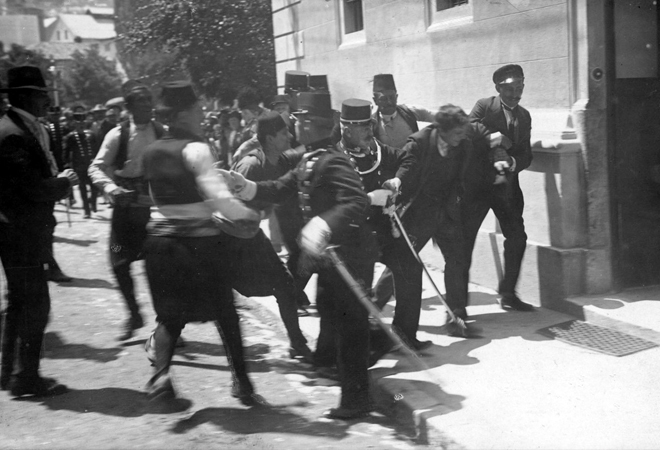
The Black Hand
If you’re riding a little low from the bummer that is freemasonry, then let’s talk about a time a secret society directly contributed to the deaths of millions of people. Hooray!
Early 20th Century Europe wasn’t a friendly place. In fact, there’s a pretty decent dysfunctional family reunion analogy to be drawn here, since their royalty at the time basically was one giant inbred family party that’d gotten its hands on gunpowder. Balkan gunpowder, to be precise. And the Serbs loved playing with matches.
While historians are still debating the official beginning of World War I, because historians love to argue about everything all the time no matter where they are, the general population has been taught the beginning was the assassination of Archduke Ferdinand. The group that’s largely responsible for the assassination was The Black Hand. They were a group dedicated to protecting the Serbian way of life, a culture they saw was being threatened by the encroachment of Austrian power.
They functioned pretty much how we expect a secret society to function. They swore an oath that they’d die before giving up the organization’s secrets and used the connections of an older, more respectable group to further their cause. The fact that they committed political murder was common knowledge. Political murder is not a euphemism. We mean they murdered politicians.
In terms of secret societies who got results, whether or not they were the results the group intended, The Black Hand’s pretty high up on that list. Starting a global conflict is something other secret societies dream of.

The Fenian Brotherhood
While we’re on the subject of trying to start global conflict, let’s talk about Irish independence. The Troubles were one of the more prolonged conflicts of the last century and were so active, people are still finding bodies. We’re only using this example because this is one people are still alive to remember as well as being relatively contained to the island of Ireland. That containment wasn’t always the case.
To say that the Irish were treated well in the United States would be wrong. It would be very wrong. So in 1858 Irish nationalism was running high on both sides of the Atlantic, and for the next decade or so the Irish were looking for a way to cash in on the violent energy of Irish-Americans as well as the combat experience of Irish veterans of the Civil War. They found that way in The Fenian Brotherhood. John O’Mahony was an Irishman who fled to Paris, and later America, after some legal disagreements with the British government. Mainly, that he thought he should be able to kill British soldiers. The British disagreed.
In America, O’Mahony built The Fenian Brotherhood using the Irish who’d left during the Great Famine and the descendants of earlier Irish immigrants. His was a transAtlantic movement, with The Irish Republican Brotherhood starting up in Ireland at the same time, founded by one of O’Mahony’s comrades and the man he’d fled to Paris with. Both grew quickly. The IRB had their own thing going on, so we’ll focus on the Americans.
The Fenian Brotherhood’s biggest contribution to the Irish struggle was a series of raids across the Canadian border from 1866-1871, spurred on British violence against the Irish Republican Brotherhood. And these weren’t raids that were easily dispersed. Lives were lost on both sides.
At the Battle of Ridgeway, the Canadians were forced from the battle after encountering a force of 600 Fenians. Later that same day, the Fenians captured 36 Canadian soldiers in a skirmish a Fort Erie. Soon, British forces moved on the Fenians, and the command withdrew to the US, where everyone was arrested. But that didn’t dissuade 200 Irishmen from advancing into Huntington, Canada, although theirs wasn’t a successful excursion.
After the action of 1866, Canadian and British forces got better at dealing with the Fenians, quickly ending two attempted raids in 1870, with the last significant Fenian action being in October, 1871, when 40 men took over a Canadian customs office.
The Fenians obviously didn’t achieve their ultimate goal of Irish independence, but they are at least partially to thank for Canada’s Confederation and the Dominion of Canada. So while Ireland didn’t get its independence, at least the Irish got Canada some of theirs.
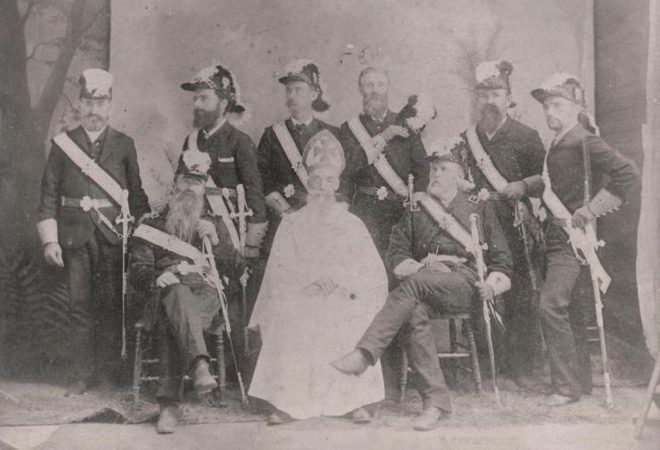
The Knights of the Golden Circle
When it comes to ominous names, these guys get top marks, and that’s on a list that includes a group called “The Black Hand.” These guys make it sound like there are still round table meetings of armored, medieval men standing with hands on sword hilts, deciding who lives, who dies, and who gets to be president. And in a way, that’s right. It seemed like The Knights of the Golden Circle held some clout during the 19th Century.
The name comes from the original, grandiose mission statement of the group, which was to draw a huge circle that would encompass most of the southern United States, Central America, part of South America, and all of the West Indies, uniting them under the banner of a single, enormous slave empire. They’d have a monopoly on tobacco, cotton, sugar, rice, and coffee as well as unchallenged control of all the waterways inside their circle. So, basically, the same mission as the Illuminati.
What’s scarier is that, while they were never a big group, these guys achieved the level of secrecy other groups pretend they have. About fifty years after the Civil War, a few dozen Confederate soldiers were interviewed. Of them, two were members and only three others had ever even heard of the group. And that was of the people who would’ve loved to know the Knights were out there. The group had levels, sworn soldiers, alleged international filibustering schemes, and even got to the point of sizable military maneuvers getting mentioned in actual newspapers. At the time of the maneuvers, there were plans of invading Mexico. They reached the point of having an actual force together, and enough of one that official US armed forces personnel were saying they’d have to go and arrest these guys before they made it look like the US was trying to start a full-scale war with Mexico.
But before we get carried away with the image of a widespread Confederate conspiracy that threatened the good people of Mexico with an invasion of an aspirational slave empire, we should look at the facts. The Knights were short lived and had little in the way of achievements. Their leadership was poor, they had little funding, and their membership was scattered. They’d fit in well in Silicon Valley, but when it comes to international secret societies, they were only dreaming. But that won’t stop people from thinking they killed Lincoln.
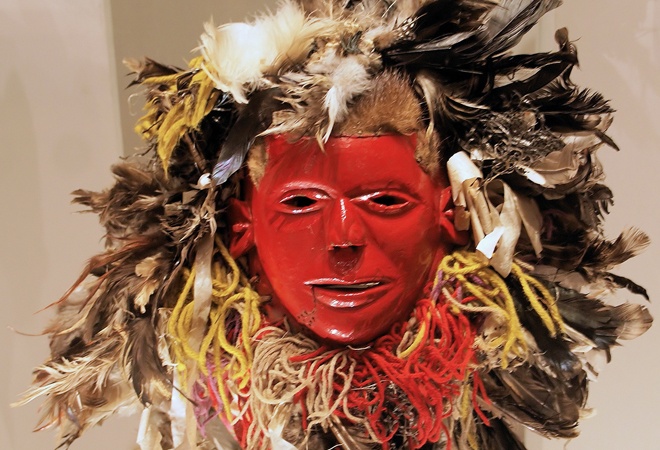
The Nyau Dancers
For most of us, secret societies are relegated to history. To think of any economic downturn or social violence as the result of a bunch of masked marauders is tempting, but it’s more likely that most people aren’t great at dealing with other people. But in the Chewa culture, they might actually be right, at least when it comes to the violence.
The Chewa people live in Malawi, Zambia, Mozambique, and in small immigrant communities in Zimbabwe. Everywhere they’re found, you can also find the Nyau, a secret cult of dancers who play an important part in Chewa religious beliefs. Interestingly enough, UNESCO, the same group that designates world heritage sites, protects the Nyau, calling them “Masterpieces of the Oral and Intangible Heritage of Humanity.” After doing some research on the group, we’re inclined to agree with UNESCO (groundbreaking philosophy, we know) because we’re both weirdly comforted by their existence and thoroughly terrified of them.
Most of what we found on the Nyau comes from a report filed by Vlad Sokhin, a photographer who was able to join the Nyau and document their rituals. Nyau mostly dance their Gule Wamkulu, or “Great Dance,” during public holidays, anniversaries of important events, and funerals, but must not be called men while they inhabit the spirit of their masks. That’s standard enough. Plenty of cultures have different ways of celebrating different events and most, if not all, involve dancing, music, and spirituality. But that doesn’t explain why people are scared of them.
The fear comes from two types of Nyau. The first is the Nyau Kampini, the “dangerous” Nyau. The belief is that this type of Nyau can kill you and villagers will, sensibly, avoid him whenever they see him. They will also tie him up during dances, as they believe he is prone to attacking uninitiated villagers.
There are also the Nyau Akakairo, who wear nothing but rags and masks. Locals avoid them as well, because in their case, they will actually beat you. And severely. Beating is a bit of a motif with them too, since initiation into and membership in the cult both incorporate physical harm.
Since the Nyau guard their identities so fiercely and are rarely outed as a member of the Nyau, in theory, there’s little consequence for the beatings and murders they perpetrate. Villagers can even pay a member of the Nyau to kill someone else with the fairly safe assumption that no one’s going to look for the killer. Police from Mozambique said to the photographer, “How can you put an elephant or a snake in jail? It is the same with the Nyau.” Which, we’re not judging here, but that might not be the best attitude for the police to have if someone’s getting murdered.
Where it really becomes a secret society is that members of the Nyau also live normal lives. When they take the masks off, they have jobs and families, the same way all of us do. It’s been centuries since they started living like this, and, with how well they keep their secrets, it’s unlikely the end is coming any time soon.
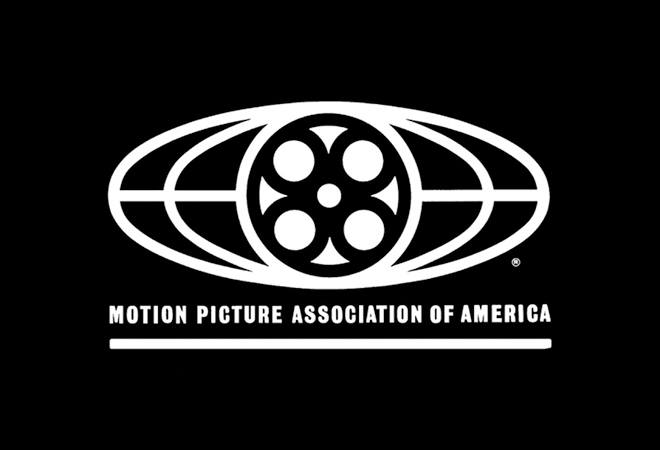
The Motion Picture Association of America
That’s right, the people that rate movies are in a cult. Not that they’re drinking goat’s blood or anything, but it’s hard to describe the MPAA as anything other than a secret society. We’ll pull a block quote from an interview with Kirby Dick for a more indepth description:
It’s unbelievable that you could have this board of only parents with no training, with no guidelines, operating with no transparency, that not only rates the films of the MPAA, but rates their competitors, who have no recourse. It’s astonishing that an institution like this exists.
If you take out the two things about ratings, Dick’s description could be applied to basically any conspiracy theory ever. Did we land on the moon? Or did conspirators operating with no transparency stage it? Is Elvis dead or did he get help from a group with no guidelines with starting a new life? Did aliens crash in New Mexico and is it astonishing there’s an institution that would hide that from us? Should Die Hard be rated R or did parents keep us from watching it for too long?
Dick goes on to talk about how, for his 2006 movie This Film is Not Yet Rated, people were calling him trying to find out how to fight the rating system or to at least find out more about how it works and at the time of his 2012 interview, people were still calling. At one point, Dick even likens the amount of secrecy around the MPAA Ratings Board to the CIA’s MO.
And don’t think things have changed since Dick gave that interview. On the August 23rd Season Premiere of Adam Ruins Everything, host Adam Conover brought up the fact that no one knows who’s rating our movies. Just like Dick, Conover claims all that’s known about the group is that they’re a group of parents, and not, as they seem to believe, a deep-cover operative group bent on exposing the corruption and sin inherent in the system. In fact, with the way some people have been talking about the MPAA, we honestly wouldn’t be surprised if the next time we heard about them, they were staging a coup in Nicaragua.

